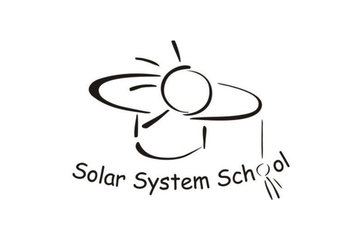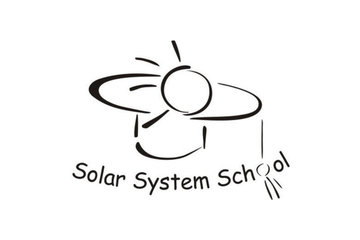IMPRS Evaluation 2012
Agenda - Abstracts of Talks - List of Posters
Agenda
| 18 June | from 19:00 | Meeting of Evaluation Committee with Executive Committee at Gebhards Hotel Göttingen, Restaurant Georgia-Augusta-Stuben for Dinner |
| 19 June | 09:00-09:45 | Sami K. Solanki: Welcome and Introduction |
| 09:45-11:00 | Talks by Students | |
| Julie Brisset: The SPACE experiment: studying planet formation processes on a suborbital rocket | ||
| Benjamin Beeck: Simulations of stellar magnetoconvection | ||
| Maria Andriopoulou: Microsignatures as tracers of electric fields in Saturn's magnetosphere | ||
| David Bühler: Does the quiet Sun magnetic flux vary with time? | ||
| Jan Langfellner: Probing solar convection with helioseismology | ||
| 11:00-12:30 | Poster Session | |
| 12:30-13:30 | Lunch and Discussions | |
| 13:30-14:30 | Discussion with Students | |
| 14:30-15:30 | Discussion with Supervisors and Executive Committee | |
| 15:30-16:30 | Internal Discussion | |
| 16:30-17:00 |
Summary of the Evaluation |
|
Abstracts of Talks
The SPACE experiment: studying planet formation processes on a suborbital rocket
Julie Brisset
Institute for Geophysics and Extraterrestrial Physics, Technical University Braunschweig
The Suborbital Particle Aggregation and Collision Experiment (SPACE) is a novel approach to study the collisional properties of submillimeter-sized, highly porous dust aggregates. Studying these properties helps increasing our knowledge about the processes dominating the first phase of planet formation. During this phase the growth of planetary precursors occurs by agglomeration of micrometer-sized dust grains to aggregates of about a millimeter. However, the formation of larger bodies from the so-formed building blocks is not yet fully understood. Recent numerical models especially lack support by experimental studies in the size range of submillimeter-sized bodies colliding at very gentle relative velocities of below 1 cm/s. First observations of particle collisions and aggregate clustering with the SPACE experiment were recorded during a drop tower campaign at the ZARM (Zentrum für angewandte Raumfahrttechnologie und Mikrogravitation) in Bremen in August 2011. The high-speed video data produced during the REXUS 12 suborbital rocket flight in March 2012 still has to be analyzed and will deliver data on single particle collisions velocities and sticking probabilities, cluster formation and growth, sticking forces and low velocity particle fragmentation.
Simulations of stellar magnetoconvection
Benjamin Beeck
Institute for Astrophysics, University of Göttingen
Max Planck Institute for Solar System Research
Cool main-sequence stars have convective envelopes, from which convective flows extend into the optically thin surface layers and thus measurably modify the stellar spectra. Many cool main-sequence stars also show magnetic activity and are known to have a substantial global magnetic field. While methods to probe the global geometry and strength of the magnetic field are available, the local structure of the field, which is governed by its interaction with the convective plasma flows, is unknown. Knowledge of the local structure of the magnetic field is, however, essential to interpret stellar spectra and measure the field. We have run and analysed 3D radiative magnetohydrodynamical simulations of the surface layers of main-sequence stars of spectral types F3 to M2. Our simulations show substantial differences in the magnetoconvection between stars of different spectral types. First steps have been undertaken towards a quantitative comparison of our results to observational data. Moreover, our results provide an independent test and calibration for techniques with which magnetic field strength and geometry are commonly assessed.
Microsignatures as tracers of electric fields in Saturn's magnetosphere
Maria Andriopoulou
Max Planck Institute for Solar System Research
Absorption signatures in energetic electron distributions (microsignatures) caused by the interaction between electrons bouncing along the magnetic field lines and drifting around the planet with Saturn's icy moons orbiting in its inner magnetosphere provide a nice tool to investigate parameters of the global magnetospheric parameters.
In this talk we will present how radial displacements from the expected locations of the energetic electron microsignatures can be used as tracers of unidentified electric fields. On the basis of a statistical study from a large number of microsignatures, caused by the Saturnian moons Tethys and Dione recorded in the period July 2004 - January 2011, we report some local time asymmetries in their radial displacements that follow a systematic trend: inward displacements in the nightside and outward displacements on the dayside part. For this study we have used electron data in the energy range 20-300 keV from the MIMI/LEMMS detector as well as magnetometer data from the MAG instrument both aboard the Cassini mission.
We will show that these asymmetries cannot be explained by asymmetries of the magnetic field in the inner magnetosphere. We developed several methods to associate the properties of the displacements to magnetospheric electric fields. Our results are consistent with an electric field that has a noon-to-midnight orientation and amplitudes of around 0.11-0.18 mV/m. Such an electric field is not predicted by any theoretical model and its origin is still unknown.
Does the quiet Sun magnetic flux vary with time?
David Bühler
Max Planck Institute for Solar System Research
The 11-year solar sunspot cycle has been known for centuries, however the investigation of smaller magnetic features and their relationship with the solar cycle could only studied in the past two decades. The space-borne Hinode mission has revealed copious amounts of magnetic flux covering the quiet Sun. With its 0.3 arcsecond resolution it has become possible to study the smallest magnetic features present on the solar surface over many years. The properties of this horizontal and vertical flux have nurtured the notion of local dynamo action operating close to the solar surface, independent from the global dynamo. We sought to investigate any solar cycle related variations in the polarisation signals detectable on the disc centre of the quiet Sun starting from November 2006 until May 2012. We studied in particular the weak signals found in the internetwork. The investigation used line-integrated circular and linear polarisation profiles obtained from the photospheric Fe I 630.25 nm absorption line measured by Hinode SOT/SP. After a careful consideration of the instrumental degradations affecting SOT/SP, the quiet Sun internetwork magnetic flux shows no cycle related variation and is constant throughout the entire period of investigation. This supports the idea that independent local dynamos are responsible for the majority of the quiet Sun internetwork flux detected by Hinode.
Probing solar convection with helioseismology
Jan Langfellner
Institute for Astrophysics, University of Göttingen
Max Planck Institute for Solar System Research
Observations of seismic waves on the solar surface can be used to probe the Sun's interior, particularly the convection zone. In time-distance helioseismology, the travel times of waves between pairs of points on the solar surface are measured using a cross-correlation technique. Wave travel times are sensitive to the properties of the medium through which the waves propagate. My project consists of developing inverse methods of time-distance helioseismology in order to characterize 3D convective flows in the upper convective zone. At first, the effort will focus on the formulation of the inverse problem: What travel times should be measured and used as input to the inversion procedure? Can we design an objective regularization procedure (typical inverse problems in time-distance helioseismology are ill-posed in the absence of regularization)? Using toy problems and synthetic observations, I intend to design more reliable inversion procedures in order to place constraints on solar convective velocities. These new procedures will then be applied to SDO/HMI observations.
List of Posters
Sun and Stars
- S1 - Björn Löptien: Helioseismology with Solar Orbiter
- S2 - Emanuele Papini: Propagating linear waves in a convectively unstable solar model: a perturbative approach
- S3 - Dennis Röhrbein: Analysis of 3D-MHD simulations of solar magnetoconvection
- S4 - Nilda Oklay: Temperatures of small scale magnetic structures in deep solar photospheric layers
- S5 - Tino Riethmüller: Comparison of photospheric bright points between Sunrise observations and MHD simulations
- S6 - Shahin Jafarzadeh: Structure and dynamics of internetwork magnetic bright points in the lower solar atmosphere observed by Sunrise
- S7 - Jayant Joshi: Convective nature of sunspot penumbral filaments
- S8 - Antoine Genetelli: Multi wavelength analysis of emerging flux using SDO
- S9 - Iulia Chifu: 3D reconstructions of solar coronal features
- S10 - Neda Dadashi: Doppler shift of hot coronal lines in a moss area of an active region
- S11 - Farhad Shakeri: The cycle-related solar VUV variability of the quiet Sun
- S12 - Stephan Barra: Coronal active region modeling based on SDO data
- S13 - Jinhua Shen: Early abnormal temperature structure of X-Ray loop-top sources of solar flares
- S14 - Feng Chen: Coronal dynamics driven by flux emergence
- S15 - Philippe Bourdin: Viscous versus Ohmic heating in a MHD coronal model
- S16 - Tijmen van Wettum: Response of the corona to different heating mechanisms
- S17 - Patricio Munoz Sepulveda: Theory and numerical simulation of current sheet instabilities in the solar corona
- S18 - Daniel Verscharen: Spectral transfer of weak turbulence from MHD scales into the kinetic regime in space plasmas
- S19 - Anuradha Kar: Historical Ca II photographs for solar irradiance studies
- S20 - Kok Leng Yeo: Precise reconstructions of solar irradiance variations from SDO/HMI magnetograms
- S21 - Maria Dasi Espuig: Reconstructing solar irradiance with the use of a surface flux transport model
- S22 - Juanjo Piqueras: CMOS sensor and camera for the PHI instrument on board the Solar Orbiter mission
- S23 - Navdeep Panesar: A polar crown prominence observed simultaneously from SDO and STEREO
Planets and Small Bodies
- P1 - Konstantin Finke: Simulation of the kinematic dynamo onset of spherical Couette flows without overall rotation
- P2 - Daniel Heyner: The feedback dynamo of Mercury
- P3 - Domenico Meduri: A statistical analysis of reversals: Geomagnetic field and dynamo models
- P4 - Wieland Dietrich: Can the heterogeneous magnetization of the Martian crust originate from a hemispherical dynamo?
- P5 - Lucia Duarte: Anelastic dynamo models - an application to the gas giants
- P6 - Rakesh Yadav: Exploring the scaling laws in rotating spherical dynamos
- P7 - Eugene Shalygin: Study of the Venus surface and lower atmosphere using VMC images
- P8 - Yeon Joo Lee: Meridional trends in the radiative energy balance of the Venus mesosphere
- P9 - Stefan Wiehle: Hybrid simulations of Venus' ionosphere
- P10 - Jisesh Sethunadh: General circulation modeling of stratospheres of cold and warm Jupiters
- P11 - Kun Li: The source region of the cold ion outflowing from the Earth's ionosphere
- P12 - Peter Kollmann: Sources, sinks and transport of energetic particles in Saturn's magnetosphere
- P13 - Anna Kotova: Energetic particle tracking techniques and its application to the magnetosphere of Saturn
- P14 - Megha Bhatt: Iron abundance estimation of the lunar surface using VIS-NIR spectrometers on-board Chandrayaan-1
- P15 - Yoann Vernisse: Classification of the interaction of planetary bodies with stellar winds by hybrid simulation
- P16 - Christoph Koenders: Revisiting cometary bow shock positions
- P17 - Hendrik Kriegel: Hybrid simulations of Saturn’s moon Enceladus compared with Cassini magnetometer data
- P18 - Chemeda Tadese Ejeta: Polarimetric characterisation of Saturn's moon Iapetus
- P19 - Juan Andres Sanchez: Surface mineralogy of two V-type near-Earth asteroids
- P20 - Guneshwar Thangjam: Mineralogy and geology of Vesta through impact craters from Dawn
- P21 - Nafiseh Masoumzadeh: The surface topography of asteroid (21) Lutetia
- P22 - Marc Hofmann: Granular flow in low gravity space environment
- P23 - Chaitanya Giri: Characterization of the Rosetta COSAC flight spare model II with comet-type volatiles
- P24 - Sebastian Höfner: Thermal analysis of cometary nuclei
- P25 - Bastian Gundlach: Micrometer-sized ice particles for planetary science experiments
- P26 - Daniel Heisselmann: An experimental view on the collisional properties of cm-sized Saturnian ring particles
- P27 - Karsten Schindler: Detector characterization and study activities for future VIS-NIR spectrometers
- P28 - Ronny Lutz: Searching exoplanets with the timing method











